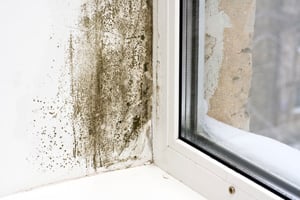The Rothenberg Law Firm Accident and Injury Lawyers is no longer accepting cases involving mold exposure. For information and resources regarding mold issues, please visit the United States Environmental Protection Agency’s website here.
Understanding Toxic Mold Syndrome:
Toxic Molds Syndrome (TMS) is the term used to define illnesses that arise from exposure to spores of certain molds. These specific molds produce a poison called a
Toxic Molds Syndrome (TMS) is the term used to define illnesses that arise from exposure to spores of certain molds. These specific molds produce a poison called a mycotoxin (“myco” refers to a fungi) which can cause serious health problems. The spores are released into the air and can be inhaled. Symptoms of mycotoxin exposure include:

- fever
- nose and throat irritation
- dizziness
- lung congestion and shortness of breath
- nausea
- fever with accompanying aches
- burning or watery eyes
As with most chemical and bacteria exposures, people who already suffer from weakened immune systems may be more vulnerable than others to these harmful effects. Anyone with allergies or chronic respiratory disease may experience more pronounced symptoms from exposure to these molds. Similarly, children and the elderly are particularly at risk. Yet, stories continue to come in of certain day care centers or nursing homes kept in disrepair that allow mold to develop and expose children and seniors to these dangerous spores.
Origin of Toxic Mold
It is important to note that most mold forms are harmless. For instance, the mildew that most everyone has seen on bathrooms tiles or under lawn furniture is usually not toxic. But, although most molds are harmless, several mycotoxin producing molds can also develop in the kind of environments described above. Water leaks, flooding, and poor humidity control all can create environments in which dangerous molds flourish.
Removing such molds is vital to in preventing TMS, but can prove difficult. If walls or ceilings are heavily contaminated, the entire structure must be removed. All traces of mold must be destroyed and repairs must be made that will ensure leaks or humidity will be controlled before the structures can be rebuilt. TMS has also been called “Sick Building Syndrome,” because many types of dangerous molds are found primarily, if not exclusively in buildings. “Sick” buildings infested with molds such as Stachybotrys, Penicillim, Paecilomyces, Aspergillus, and Fusarium cause serious health problems.
Toxic Mold Case
As with all cases of injury, the civil law provides avenues for recourse in situations where the exposure may have been prevented if others had acted reasonably.
To prove a toxic mold case, a victim must show several factors:
a) The illness and disability have arisen from exposure to such molds. Sometimes this evidence can be found in a person’s lung tissue. Establishing the existence of disease, with mold exposure as its cause, is only the first step.
b) After which, a victim must show that mold exposure exists and that a defendant was negligent in preventing or removing the conditions causing the mold.







